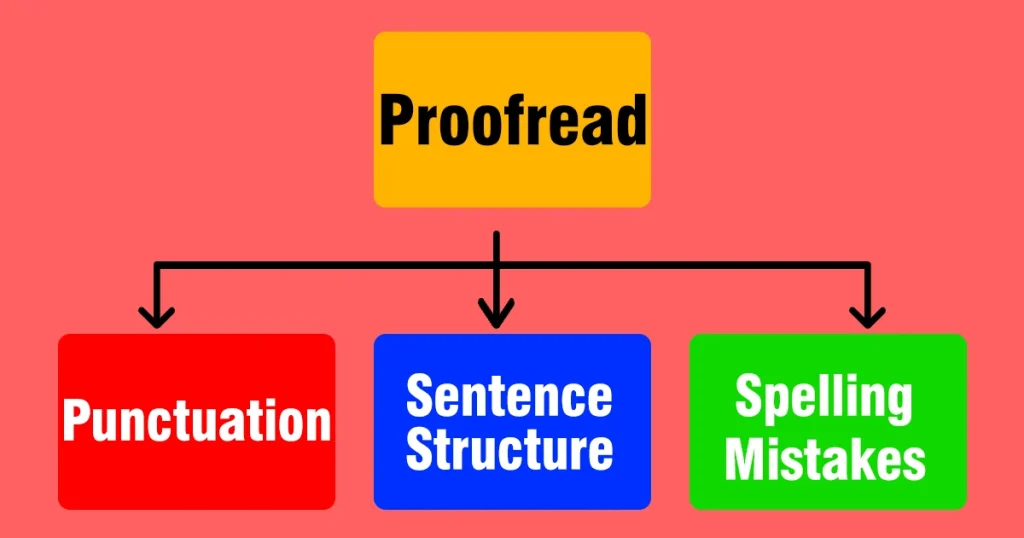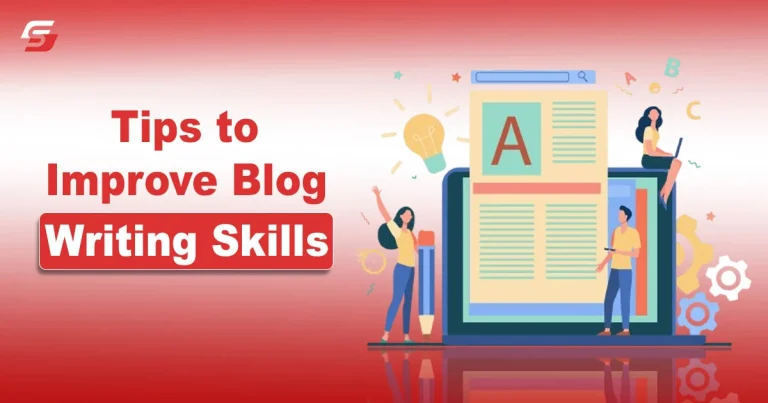Most people consider blog writing as simple as making a cup of tea, while the reality is totally opposite. If you are a blogger and have started a blog, you will surely be aware of the basic hurdles that break the sequence of the content and are difficult to tackle.
But that doesn’t really demotivate you if you learn some essential blog writing skills and improve them with continuous practice. That’s what I am going to highlight in this blog post as I also have been in that patch at the early stages of my career.
While I can’t guarantee 100% results, but this guide will help you create content that captivates your audience’s attention, makes that reader feel engaged, and then returns to your blog or website to consume more of your content.
10 Best Practices To Improve Your Blog Writing Skills
No matter whether you are just starting the blog writing, or want to improve your skills, these tips and best practices help you to make your article unique.
Let’s discover the best blog writing tips.
10 Best Blog Writing Tips
1. Know Your Audience and Write For Them
2. Read More than You Write
3. Have a Clear Structure So Your Writing Flows
4. Start With a Strong Title and Hook
5. Be Concise and Relevant
6. Polish Your Blog Writing with SEO
7. Take Care of Grammar Mistakes
8. Avoid the Duplicate Words in Article
9. Get an Editor
10. Proof Read Your Article
1 – Know Your Audience and Write For Them
When you tailor your content to meet your audience’s needs, it ensures that your writing will be more engaging and relevant. Also, it makes your content resonate with your desired audience. The following are the best practices for this purpose.
- Take time to understand your target audience before you start writing.
- Consider their interests, preferences, and the information they seek
- The age and the type of persons your audience typically are.
If you are writing a blog article about the biggest and best sports betting bonuses, you should change the tone of your content to make it more casual, perhaps incorporating some slang and nicknames.
The typical reader will be a sports fan wanting to get his hands on some bonus money while learning about upcoming sporting events.
Always write for your target audience. Once you have published several articles, use Google Analytics and similar to analyze and measure the ROI of your content marketing campaigns. Also, check the content which is not performing well, as it may contain typical content writing mistakes that need to be removed.
2 – Read More than You Write
You can’t be a good writer if you are not reading. Yes, it’s true, if you want to become a good writer then you will need to write other authors, blogs and senior articles. Reading for writing is the most important tip to keep in mind.
I remember my struggling days of writing where I was making blunders, but as soon as I started to follow and read industry experts, their styles, and their way of writing, I felt a positive change. Research your industry experts read their blogs and make notes on what they are practicing that you can’t.
However, it is important to read more about topics that will create new ideas to make it unique. If you are following the traditional methods then your article is less likely to rank high.
Blogging landscape and writing are ever-evolving and changing, so read out the new trends and practices to know what works for you.

3 – Have a Clear Structure So Your Writing Flows
Grab a pen and paper and jot down your article’s overarching message. Your writing should always have a purpose, be that making your audience aware of an offer, or keeping them up-to-date with the latest news,. This tactic not only helps you build effective content marketing strategies but also lets you share your experiences.
Follow the steps mentioned below to have a detailed plan that you can use to keep your article on the path you want it to be.
- Consider creating a mind map to help you in the planning stages.
- Start with your central concept in the middle.
- Add branches to that main concept.
- Explore more relevant topics.
Walls of text put off online readers, so breaking up your article with subheadings and images helps to keep them engaged and reading until the end. Therefore, when you start writing, you have to make sure that you have a:
- A clear understanding of the content
- An engaging introduction
- Proper Article body
- A conclusion
Using subheadings breaks down your article into digestible sections (each subheading could be one of your mind map’s branches), which makes it easier for readers to navigate.
4 – Start With a Strong Title and Hook
When you start a blog, the primary purpose behind it is to get more traffic by engaging the users. Among the huge collections available on the web, it is not easy to stand at the top without making efforts in the right direction. You have to start focusing on the title as it mainly decides whether your reader continues reading your blog articles.
Titles
Good titles are descriptive, direct, unique, and not misleading. You want the reader to see your title and instantly know what to expect from your article.
Again, your titles should be written with your target audience in mind. Some subjects can have formal titles, while others may be more suited to a “clickbait” type title.
Initial Paragraphs
Equally as important as your title is the initial hook of your writing. Grabbing your readers’ attention from the beginning with a captivating introduction is essential. The following are the keys to grabbing the audience’s attention at the initial stages.
- A thought-provoking question
- Surprising statistics
- A compelling anecdote
- The promise to solve a problem
Always ensure your hook aligns with your content’s overall theme and purpose. For example, don’t grab a reader’s attention by giving them a startling statistic about road traffic accidents, and then write about how to create the garden of your dreams on a budget!
5 – Be Concise and Relevant
Most people who read articles online don’t thoroughly read the text; instead, they scan through it. They want concise and relevant information, so avoiding unnecessary fluff and getting straight to the point is essential.
In the under section, I have mentioned some tactics that can enable you to keep your blog readers engaged quite effectively.
- Draw your reader’s attention to relevant words or phrases by bolding the text as their eyes will naturally be drawn to bolded words.
- Each paragraph should contribute to the overall message of your article, which is why a mind map before you write is an excellent idea.
- Eliminate redundant phrases and focus on delivering valuable insights that benefit your audience.
It is also a good idea to keep your writing easy to understand. You may want to showcase your vast vocabulary, but it is often unnecessary and counterintuitive.
I know a writer who creates incredible, engaging articles but also litters his content with obscure words that only academic types would know.
While learning new words is fantastic, breaking away from reading his articles to search for what a word means takes away from the experience. Keep your audience on your page from the start of your article until the end.
6 – Polish Your Blog Writing with SEO
SEO strategies play a major role in the success of your blog. While off-page optimization is necessary for building authority, on-page SEO and Google EEAT friendly content have a direct contribution to determining whether you are able to rank in the SERP for longer or build trust with the audience.
That’s why you should focus on SEO for your website alongside other crucial elements to improve your SEO blog writing. Although most of your readers will skim through your article, they will notice any spelling mistakes and grammatical errors because they stand out like a sore thumb.
I often use some tools that can help me get into my zone by highlighting my mistakes and optimizing my blogs for SEO. Here, I am sharing them with you.
- Grammarly: It is one of the best freelancing tools that not only gives insights into spelling mistakes but also grammatical errors.
- QuillBot: Although famous for its plagiarism checking ability, Quillbot is also considered one of the best sentence expander tools. I use it when I want to rephrase content for better understanding.
- Yoast SEO: It is a website as well as a WordPress plugin to optimize the on-page SEO of blog articles. Owing to its incredible characteristics, it is declared as one of the best blogging tools.
7 – Take Care of Grammar Mistakes
When I first started writing, I didn’t realize how much grammar mistakes could affect the quality and credibility of my writing. Simple errors like misplaced commas, subject-verb agreement issues, or incorrect tenses make posts seem unpolished, even when the ideas are strong.
Readers can easily get distracted by these mistakes, which takes away from the message writer is trying to convey. So, you can pay closer attention to grammar, proofread carefully, use grammar-checking tools like Grammarly and even read the posts out loud to catch awkward phrasing.
Here is how to pay attention to Grammar:
- As a writer, you can write in an active voice whenever possible, as it makes sentences clearer and more engaging.
- Read your post multiple times and focus on different aspects like punctuation, sentence structure, and word usage.
- Tools like Grammarly, Hemingway Editor, or ProWritingAid can highlight mistakes and suggest improvements in real-time.
- Avoid overly complex sentences, which can lead to grammatical errors and confuse readers.
- Regularly brush up on basic grammar rules, like subject-verb agreement, proper punctuation, and tense consistency.
- The more you write and edit, the more familiar you’ll become with spotting and correcting common grammar issues.
The focus on grammar not only improves the clarity of writing but also makes the blog feel more professional and trustworthy.

8 – Avoid the Duplicate Words in Article
Avoiding duplicate words in articles is another helpful practice to improve your blog writing skills. However, unintentionally repeating the same words or phrases, makes the articles feel redundant and less engaging.
These repetitive words not only disrupt the flow but also make the writing seem lazy or unpolished. I noticed that readers would lose interest quickly when ideas were repeated unnecessarily.
To overcome this, you can properly read your article during the editing process. Also, try to use synonyms to add variety and rephrase sentences to keep the content fresh.
Here is how you can check and avoid duplicate words to make your blog article engaging:
- Replace repeated words with synonyms to keep the writing fresh and engaging.
- Refer to a thesaurus to find alternative words that convey the same meaning without sounding repetitive.
- Take a break before editing to approach your writing with a fresh perspective and make it easier to spot duplicates.
- Be mindful of overusing common fillers like “very,” “really,” or “just,” which can make writing feel repetitive.
- Ensure each sentence adds new information or a different perspective, which helps to reduce unnecessary repetition.
9 – Get an Editor
Even a quality writer can make mistakes in content, but if you have a good editor, then he/she will improve your mistakes. If I share my personal experience, working with an editor for my blog posts has been a game-changer in refining my writing. Initially, I was hesitant, but the experience has been incredibly positive.
An editor not only polishes the grammar and syntax but also provides invaluable insights into clarity and structure. They find errors you might overlook and suggest changes to the flow of ideas. Working with an editor will teach you to be more concise and effective in communicating your thoughts.
Their guidance will polish the overall quality of your posts and make them more engaging and professional. This collaborative process will not only improve the readability of your content but also improve your skills as a writer. They also ensure that each piece resonates more effectively with the audience.
Here is how an editor helps to improve blog writing skills:
- An editor offers a fresh perspective and identifies the areas that may be confusing or need more detail.
- Editors help maintain a consistent tone that aligns with the blog’s purpose and audience.
- They will manage the technical aspects of editing and give the writer more time to focus on content creation.
- Professionally edited content appears more polished and credible which has more chances to appear on the first pages of SERP.
10 – Proof Read Your Article
Lastly, when you are done with your blog article, proofreading allows you to carefully look at the article to find out if there is anything missing. If you publish the post without proofreading you may notice small mistakes like typos, awkward phrasing, or inconsistent ideas.
These small errors affect the professionalism of the blog and disrupt the audience’s reading experience. So be sure to proofread regularly to find these mistakes before publishing. It helps you to become more aware of common writing mistakes and errors, like run-on sentences or overused words.
Here are some effective solutions for proofreading blog posts to improve writing skills:
- Step away from your post for a few hours or even a day to gain a fresh perspective to re-read and find errors.
- Share your article with seniors or editors to review your post provides valuable insights and highlights areas for improvement.
- Focus on specific aspects like grammar, punctuation, sentence structure, or flow in separate proofreading rounds.
- Start from the last sentence and move upwards to catch spelling mistakes and typos without getting caught up in the content.
- Use a checklist to ensure you review all key areas, from grammar and spelling to structure and coherence.

Wrapping Up
These are the details regarding the tips to improve your blog writing skills. No doubt, I also suffered from a similar patch when things were not going good. However, with a consistent approach, I made a bounce back and understand the tactics to write compelling blog posts which I have shared here.
You are now armed with five sure-fire tips that can elevate your articles’ quality and impact your audience. The key to successful article writing lies in understanding your audience, delivering valuable content, and ensuring each article has a defined goal and overall message. Happy writing!












4 Comments
Pingback: What are Word Processing Tools - Top 10 Picks
Pingback: How to Start a Personal Blog (2024 Guide)
Pingback: Ways to Earn Passive Income with Technology Skills
Pingback: 12 Best Freelancing Tools for Bloggers